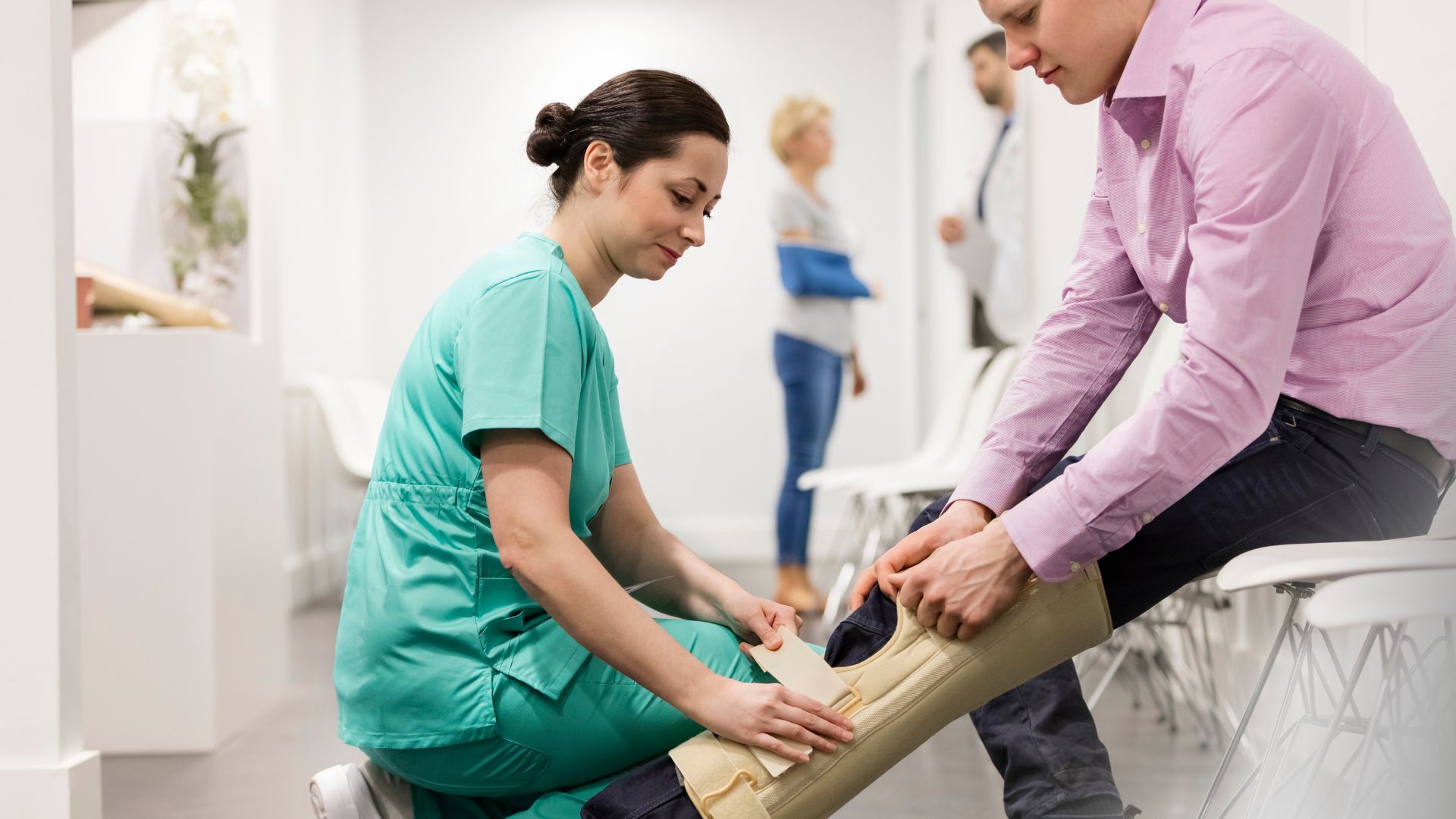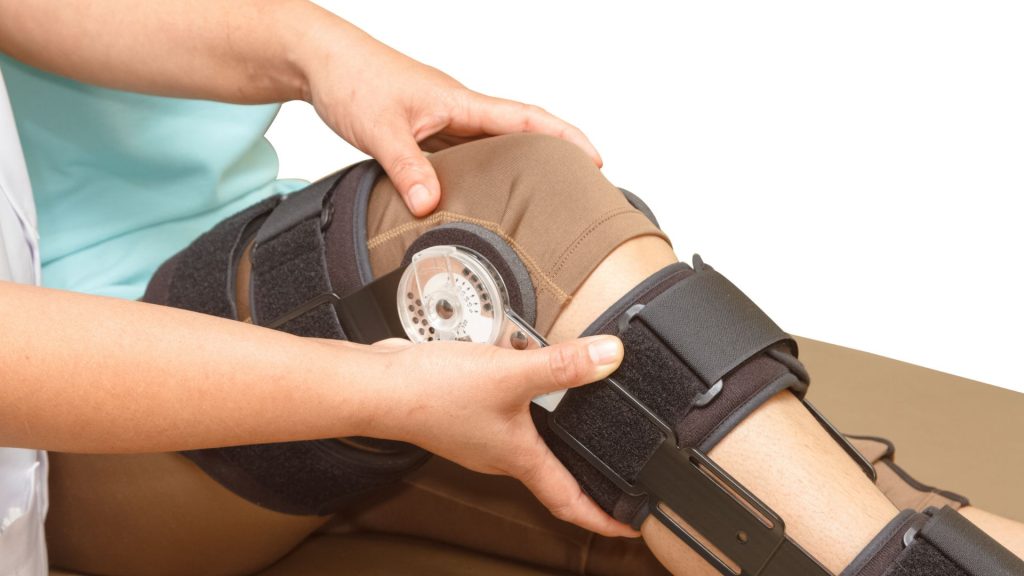Navigating through the journey of a torn meniscus is no easy feat. It can transform simple walks into challenging endeavors and sideline you from activities you adore. We understand the frustration; we’ve walked that path ourselves. Through our exploration, knee braces have emerged as a beacon of support. However, it’s crucial to acknowledge that not every knee brace fits all situations, but finding the right one can be a game-changer for your knee’s stability.
In this blog post, let’s dive into how knee braces can facilitate recovery from a torn meniscus, and guide you towards identifying the most suitable option for your unique scenario.
Whether you’re navigating post-surgical pain or seeking solace in non-invasive relief methods, we’re here with insights on selecting an ideal knee brace tailored to aid in your healing process.
Continue reading to uncover more!
What is a Knee Brace and How Does it Work for Knee Injuries?
A knee brace is a support device for the knee. It helps keep the joint stable and reduce pain during recovery.
Definition of a knee brace
Knee braces are special supports for our knees. They help protect and stabilize the knee joint. This is especially helpful for injuries like a torn meniscus. A knee brace fits around the knee and holds it in place.
It can limit movement in a safe way. This helps reduce pain and prevents more damage.
There are different types of knee braces. Some are hinged knee braces. Others are unloader knee braces. Each type offers unique support for people with knee issues. Finding the right brace for a meniscus tear is key.
It should fit well and provide comfort. We have learned that wearing the right knee brace can make recovery easier.
Using a knee brace for a meniscus injury helps us feel more secure while moving. It allows us to stay active during recovery. We have seen that knee braces not only help with pain but also enhance our overall knee support.
They are a vital part of our healing process.
A knee brace can be a helpful partner in recovery from a torn meniscus.
Types of knee braces (hinged, patellar, wraparound)
We can choose from different types of knee braces. Each type offers unique support for a torn meniscus injury.
Hinged Knee Braces
Hinged knee braces provide strong support. They have metal hinges on the sides. This design helps stabilize the knee joint. It reduces the risk of further damage during recovery.
Patellar Knee Braces
Patellar braces focus on the kneecap area. They help keep the patella in place and reduce pain. These braces are often used if the injury affects knee movement.
Wraparound Knee Braces
Wraparound braces are easy to put on and adjust. They offer compression and support around the whole knee. This type can be great for overall stability, especially when walking with a torn meniscus.
Choosing the right brace is key to recovery from a meniscus tear. We must ensure it fits well and provides proper support according to our specific situation and injury severity count.
How a knee brace stabilizes the knee joint
A knee brace helps stabilize the knee joint. It does this by limiting movement in the knee. This support reduces the risk of further damage. We want to keep the knee safe while we heal.
Different types of braces exist for meniscus injuries. Hinged knee braces and unloader knee braces are some examples. These braces can provide strong support. They allow us to move while protecting our knee.
Wearing a knee brace for a torn meniscus can ease pain and discomfort. It helps us stay active during recovery. Following our healthcare provider’s advice is key for the best results.
Benefits of Using a Knee Brace for Torn Meniscus Injuries
Using a knee brace can help us recover faster from a torn meniscus. It offers support and helps protect our knees during daily activities.
Enhanced recovery
Knee braces for meniscus tears help us recover faster. They provide the needed support and stability to our knees. This support can ease pain and discomfort associated with a torn meniscus.
We find it easier to move while wearing a knee brace. It protects our injured knee from further damage.
Choosing the right knee brace is crucial for recovery from a meniscus tear. Many different types, such as hinged or unloader knee braces, are available for us. Some of these braces are recommended after surgery to aid in healing.
Following healthcare professional guidelines ensures we use them properly and effectively.
Wearing a protective knee brace during activity allows us to maintain mobility without risking more harm. We should consider how serious the injury is when selecting our knee support for meniscus injury recovery.
This careful choice helps enhance our overall recovery experience.
Improved performance
Our recovery from a torn meniscus can lead to improved performance. Using a knee brace for meniscus tear recovery helps us regain strength. This support gives our knees stability while moving.
Good knee support allows us to perform daily activities without extra pain.
Wearing the right knee brace can make a huge difference. It protects the injured area during physical activity. This protection lets us move more freely and confidently. A stabilizing knee support keeps pressure off the damaged meniscus, reducing further injury risks.
With proper use, we experience less discomfort when performing tasks or exercises. Increased joint support also helps in physical therapy sessions after surgery. We see how a protective knee brace aids our rehabilitation journey, promoting better overall outcomes and helping athletes return to their sport sooner.
Increased joint support
Knee braces for meniscus tears provide increased joint support. They help stabilize the knee and reduce movement that can cause pain. Wearing a knee brace can help prevent further damage to the knee.
This support is vital for safe movement during recovery from a meniscus tear.
Many people find that using a supportive knee brace improves their comfort. It allows us to engage in daily activities without worrying about the pain. A proper knee brace gives us the strength we need.
It plays a key role in the recovery process.
Safely protecting and stabilizing the knee
Using a knee brace helps us safely protect and stabilize the knee. These braces limit stress on the meniscus. They prevent further damage while we move our leg. With a supportive knee brace for meniscus tear, we can feel more secure during daily activities.
A good fit is key to effective support. Some braces are ideal after surgery, aiding recovery from meniscus tear with knee brace use. They help take away pain and discomfort too. Different types are available, like hinged and unloader braces, giving us options that suit our needs.
How to Choose the Right Knee Brace for a Torn Meniscus
Choosing the right knee brace for a torn meniscus is key to recovery. We should think about our injury type and how bad it is, as well as find a fit that feels secure but not tight.
Considering the type and severity of injury
We must think about the type and severity of a torn meniscus injury. Different injuries need different support. A knee brace for meniscus tears is not one size fits all. For mild injuries, a simple brace may help us feel better.
It can limit stress on the meniscus while we move.
For more severe cases, we might need specialized braces like hinged or unloader knee braces. These offer extra support and reduce pain during recovery. Our healthcare professional can guide us to make the right choice based on our needs.
Finding the best knee brace is key for comfort and healing after surgery too. The right fit ensures that we get proper support without hindering movement.
Next, we will look at how to choose the right knee brace for our situation.
Getting a proper fit
A proper fit is very important for a knee brace. The right size gives support and comfort to the knee while wearing it. If the brace is too loose, it won’t protect us well. A tight fit may cause pain or discomfort.
It’s best to measure our leg before buying a brace.
We should consider the type and severity of our injury when choosing a knee brace for meniscus tears. Some braces work better after surgery, while others help during recovery from an injury alone.
Finding the right one can aid in healing and keep our knees stable while we stay active.
Combining therapies with a knee brace
Using a knee brace for a torn meniscus can improve recovery. We can combine this with other therapies for better results. Physical therapy often helps strengthen the muscles around the knee.
This support can ease pain and promote healing. Some braces are also great after surgery to aid in recovery.
We should consult healthcare professionals when choosing treatments. They can guide us on how to best use a protective knee brace for a meniscus injury. Combining therapies ensures we get the most effective care possible as we work towards full recovery from our knee injuries.
Conclusion
Knee braces can greatly help with meniscus injuries. They offer support and stability, aiding recovery. Choosing the right brace is key for comfort and effectiveness. Following expert advice ensures we use them correctly.
We encourage everyone to consider a knee brace as part of their healing journey.
Taking action now can lead to better knee health and improved mobility!
FAQs
1. Can a knee brace help in recovering from a torn meniscus injury?
Yes, using a knee brace for a meniscus tear can provide support and stability to the injured knee, which may aid in recovery.
2. What types of braces are recommended for meniscus tears?
For meniscus injuries, orthopedic braces like stabilizing knee supports or unloader knee braces are often suggested. These limit stress on the meniscus and offer protective assistance.
3. How do I choose the right knee brace after surgery for a torn meniscus?
When choosing a post-surgery brace, look at reviews of different models. Consider factors such as comfort, adjustability and how well it provides support to your healing ligament.
4. Are there specific braces designed for both arthritis and meniscus tears?
Yes, some designs cater specifically to those suffering from both conditions by providing extra support and limiting pain caused by arthritis while also aiding in the recovery from the torn meniscus.
5. Can I combine other therapies with wearing my knee brace during rehabilitation?
Absolutely! It’s common practice to use multiple treatments together during athlete rehabilitation after an injury like this one; combining physical therapy sessions with consistent use of your supportive gear can optimize recovery.



